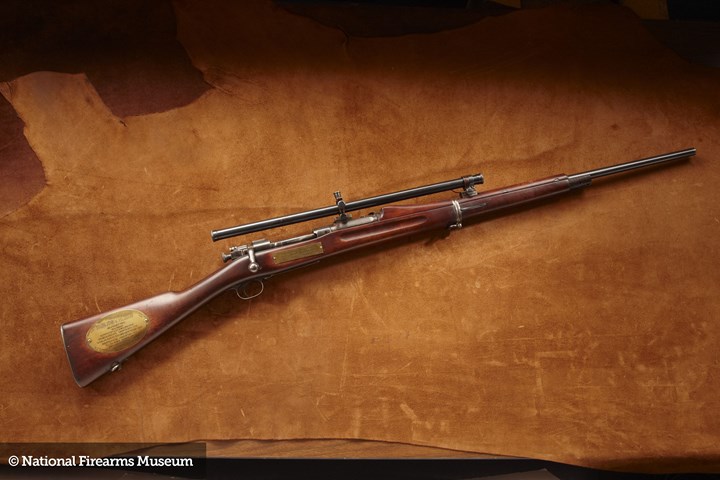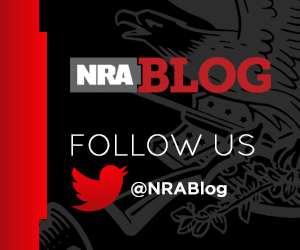Gallery

National Firearms Museum
1 of 1
Committee of Safety Flintlock Musket
Early colonial Committees of Safety salvaged older fowlers, muskets, and fusils to provide the fledging patriot army units with serviceable arms. America faced off against the most powerful army in the world with these well-worn, rebuilt pieces and won the day. In battles from Lexington to King’s Mountain, these early smoothbores were among the first guns in place to help win America’s independence.
Read more here.
Read more here.

National Firearms Museum
1 of 1
Mathias Miller Pennsylvania Kentucky Flintlock
Those fortunate enough to possess the highly accurate flintlock long rifle, with most of these being handmade in Virginia, Maryland and Pennsylvania, enjoyed a range advantage. But the slower-reloading “Kentucky” rifle could not match the British musket in a shoulder-to-shoulder confrontation at close range. To best the British armies, Patriot commanders used a mix of muskets and rifles to their advantage.
Read more here.
Read more here.

National Firearms Museum
1 of 1
French Model 1746 “Charleville” Flintlock Musket
Following Benjamin Franklin’s requests to France, thousands of French “Charleville” muskets came across the Atlantic to supplement the meager arms possessed by Patriot forces. These elegant, slim and lighter French arms also set a later precedent for America’s own development of arms following the American revolution and on into the modern era.
Read more here.
Read more here.

National Firearms Museum
1 of 1
U.S. Hall Model 1819 Breechloading Flintlock Rifle
The American military was the first nation to recognize and successfully manufacture in quantity effective breechloading flintlock arms. The Hall rifles and later carbines provided an advantage over traditional muzzleloading arms in conflicts following the War of 1812.
Read more here.
Read more here.

National Firearms Museum
1 of 1
Henry Model 1860 Repeating Rifle
Employing self-contained metallic cartridges, the Henry rifle offered amazing 16-shot firepower during an era where typical soldiers were issued a single-shot muzzleloader. This lever-action design was the forerunner of later Winchester sporting and military models fielded as America spread across the continent.
Read more here.
Read more here.

National Sporting Arms Museum
1 of 1
Major John W. Hession's Springfield 03 Rifle
In World War I, bolt-action Springfield rifles squared off against similar Mauser rifles in trenches across Europe. Major John Hession’s rifle served in WWI, was sold to an individual who used it in international competition, and when England faced defeat from across the narrow Channel, was sent to Great Britain to serve once more.
Read more here.
Read more here.

National Firearms Museum
1 of 1
U.S. Springfield M1 Garand Semi-Automatic Rifle
In World War II, the semi-automatic M1 Garand rifle offered a quickly delivered eight-shot capacity in a world where 5-shot bolt-actions were standard for many nations. This rifle served well in Europe and in the Pacific, with the Korean War bringing this warhorse again to foreign battlefields. Later evolution of the Garand design into the M14 illustrated the evolution of the modern battle rifle.
Read more here.
Read more here.

National Firearms Museum
1 of 1
U.S. Underwood Elliot Fisher M1 Carbine
Not all military applications required a battle rifle like the M1 Garand. For individuals whose duties might not allow them to carry a Garand, the lighter semi-auto M1 carbine could fill that role. From WWII through Vietnam, the M1 and later M2 carbines were carried in place of shorter-ranged pistols by many officers.
Read more here.
Read more here.

National Firearms Museum
1 of 1
M16 Rifle
In the modern era, the selective-fire M16 rifle has served in a variety of conflicts, in tropical jungle to desert environments. Today, it serves our armed forces around the globe and the civilian equivalent, the semi-automatic AR-15 rifle, is the most popular rifle in America for personal protection, competition and hunting roles across the land. As many muskets once hung above fireplaces in colonial America – so today, these rifles serve proudly in both military and sporting roles.
Read more here.
Read more here.

National Firearms Museum
1 of 1
U.S. Colt Model 1911 Semi-Automatic Pistol
Handguns have always been featured in subordinate roles to rifles, but the Model 1911 pistol established itself as the hand combat arm in two world wars and many later conflicts. Soldiers like Alvin York relied on their trusty .45 sidearms in subduing enemy forces and in civilian circles, “Old Slabsides” continues to enjoy great popularity for personal protection.
Read more here.
Read more here.

 More Like This From Around The NRA
More Like This From Around The NRA



